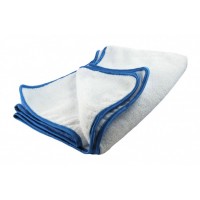Alpine SWC-D84T6 subwoofer in a box
subwoofer in box, 8" (200 mm), 100 W RMS, for VW T6 and T6.1
More about the product
More about the product
We will help you with your purchase
- Use our consulting room
- You can return the goods to us within 14 days
- Try the product at our store
Alpine SWC-D84T6 subwoofer in a box
Subwoofer box designed for installation under the seat in Volkswagen Transporter T6 and T6.1 vehicles. The package also includes handles for perfect fixation.
Key properties
- 20 cm (8”) subwoofer with dual voice coil (2 ohm + 2 ohm)
- Handling peak power of 180 W / 60 Watt RMS
- Frequency response: 34 Hz - 1.5 kHz
- Including mounting brackets for VW T6.1 / T6 mounting under the seat
- Dimensions: 355mm x 330mm x 170mm
- Sensitivity: 91 dB/W (1 m)
- Includes subwoofer grille and mounting brackets
Compatible vehicles
- Volkswagen T6 California (07/2015 -> 10/2019)
- Volkswagen T6.1 California (2019 ->)
- Volkswagen T6 Multivan (07/2015 -> 10/2019)
- Volkswagen T6.1 Multivan (2019 ->)
- Volkswagen T6 Transporter (07/2015 -> 10/2019)
- Volkswagen T6.1 Transporter (2019 ->)
- Volkswagen T6 Caravelle (07/2015 ->10/2019)
- Volkswagen T6.1 Caravelle (2019 ->)
| Catalog number | SWC-D84T6 |
| Brand | Alpine |
| Links | Official web presentation |
| RMS powerThe RMS power of the subwoofer is constant power. This is also the performance of continuous use of the subwoofer. If you exceed the power for a longer period of time, irreversible damage or subwoofer voice coil burning! You can tell if the subwoofer is overloaded by the vibration of the subwoofer membrane. | 100W |
| Max. (maximum performancePeak performance , which the subwoofer can play momentarily (approx. 0.5 s), for example when hitting drums in a song. If the maximum power is exceeded, damage can quickly occur or subwoofer voice coil burning! | 300 W |
| The diameter of the subwoofer in the box | 200mm (8") |
| ImpedanceImpedance - measurement of electrical resistance. When buying a subwoofer, it is very important that everyone make sure that the impedance is compatible with the amplifier that you are connecting to it. For subwoofers with a double voice coil, we recommend following the information in the advice center! Example: A 2 Ohm subwoofer cannot be connected to an amplifier that is only stable up to 4 Ohms. A 4 Ohm subwoofer can easily be used with an amplifier that is stable up to 2 Ohms. Connecting a 4 Ohm subwoofer to an amplifier that is stable up to 4 Ohms also without problems. The most common subwoofer impedance is 4 Ohm. Example: A 2 Ohm subwoofer cannot be connected to an amplifier that is only stable up to 4 Ohms! A 4 Ohm subwoofer can easily be used with an amplifier that is stable up to 2 Ohms. The most common impedance of subwoofers is 1 x 4 Ohm. | 2 + 2 Ohms |
| Frequency rangeThe ability of the subwoofer to play a signal from the lowest frequency to the highest, or the ability of a subwoofer to faithfully reproduce sound in a specific frequency band. Subwoofers ideally play from 20 - 150 Hz. Professionally: In the frequency range from 40 to 16,000 Hz, the vast majority of fundamental and overtones (harmonics) of all musical instruments are found. We are interested in the course of the radiated sound pressure in this range of frequencies when the loudspeaker system is supplied with constant power. We call this course the frequency characteristic, which tells us the level of radiated sound pressure in decibels (dB) depending on the frequency. The frequency characteristic of a speaker or speaker system can be expressed most succinctly with a graph. Mostly, however, the frequency characteristic is indicated by indicating the maximum tolerance of the sound pressure in the given frequency range, e.g. 50 to 15,000 Hz -+ 6 dB. Since the frequency characteristics of loudspeakers and systems in general are quite uneven, some manufacturers do not even specify this maximum tolerance of sound pressure in decibels in their catalogs for reasons of prestige. Data impoverished in this way is unfortunately worthless. What is valid is that the manufacturer offers a speaker system with a frequency range of 30 to 20,000 Hz, if he is worried about stating the maximum unevenness of the sound pressure in this range, because he can have a tolerance of, for example, +- 20 dB. The unevenness or undulation of the frequency curve in good speaker systems for high-quality music performance should not exceed +-3 dB in the 80 to 12,000 Hz band and +-6 dB in the 40 to 16,000 Hz band. Greater unevenness already depletes or emphasizes certain tonal areas, which can cause audible or even disturbing distortion. The proportion between fundamental tones and higher harmonics also changes, thereby changing the color of the sound, and individual musical instruments as well as the entire musical image sound unnatural. | 34 - 125 Hz |
Product comments
Evaluation
ask us




